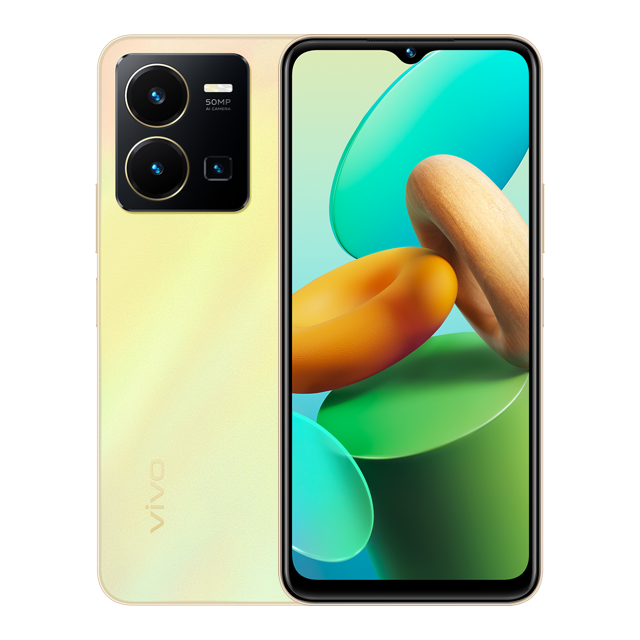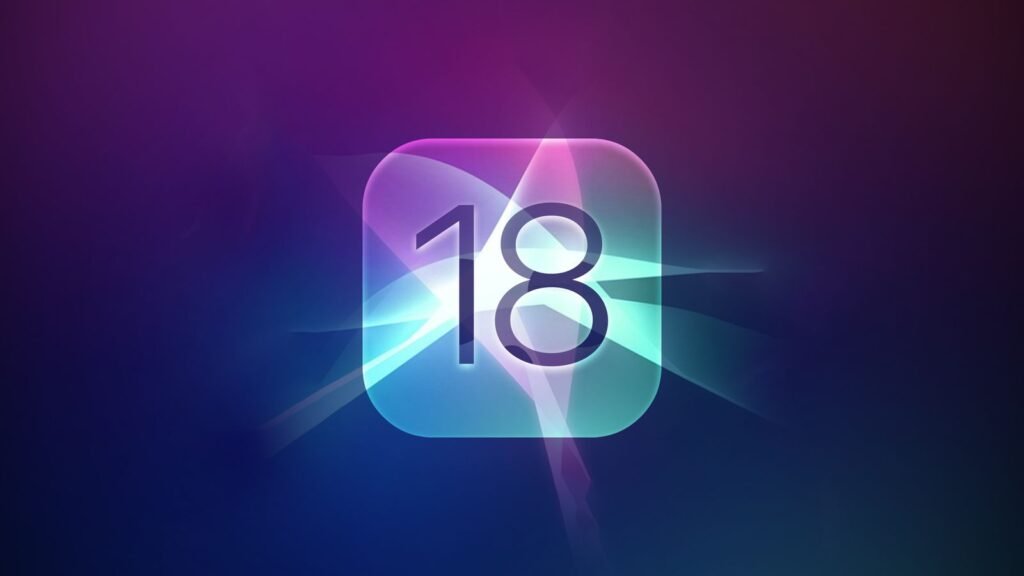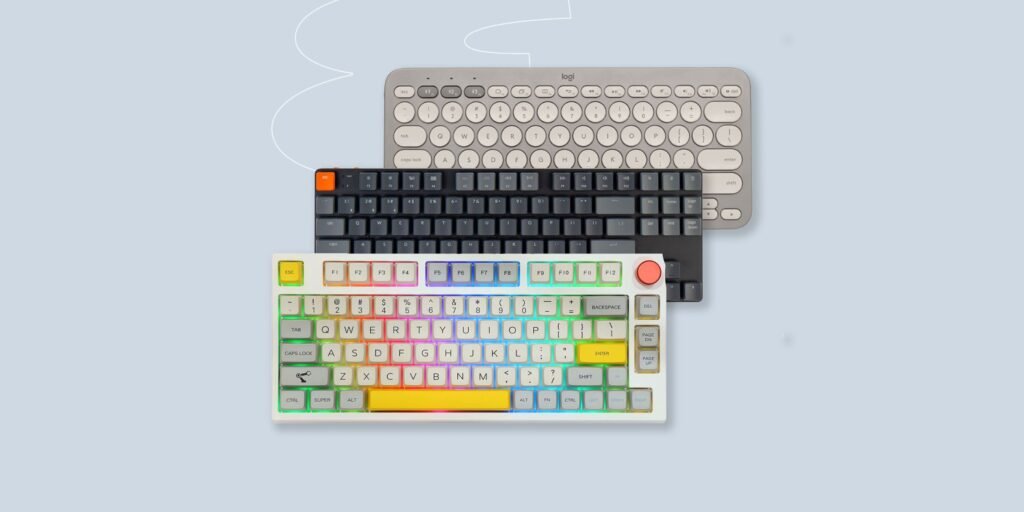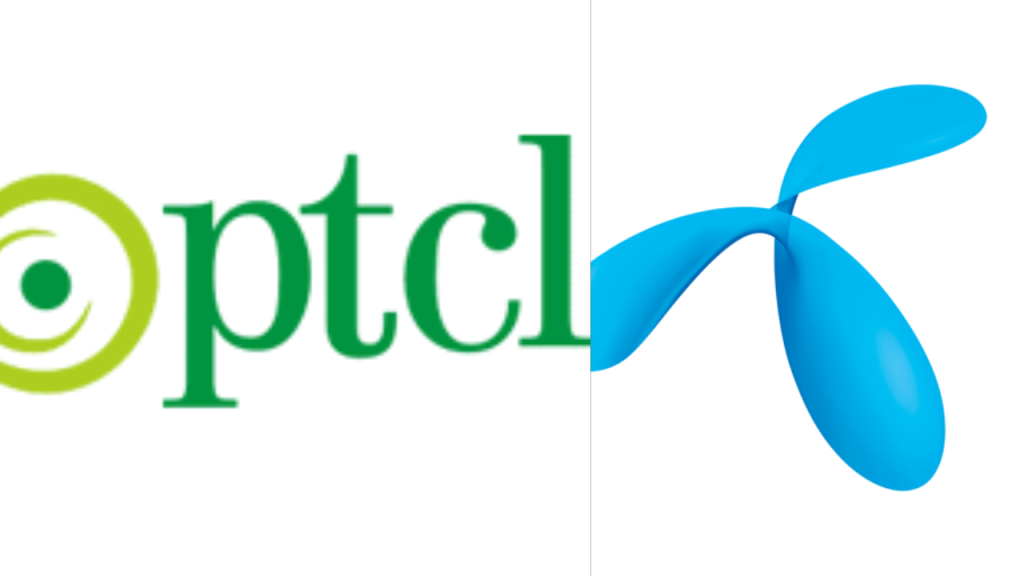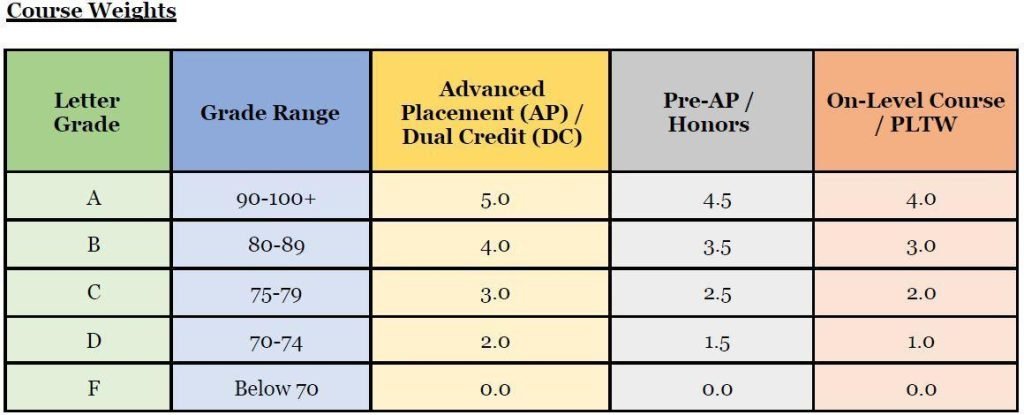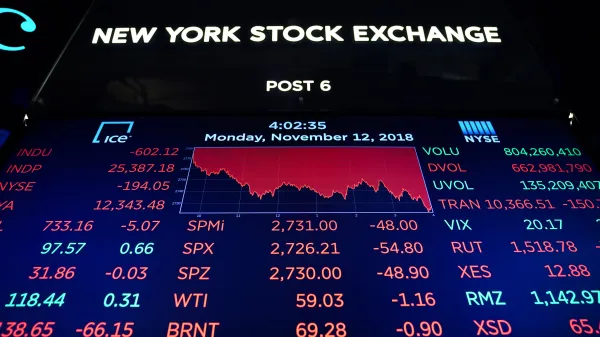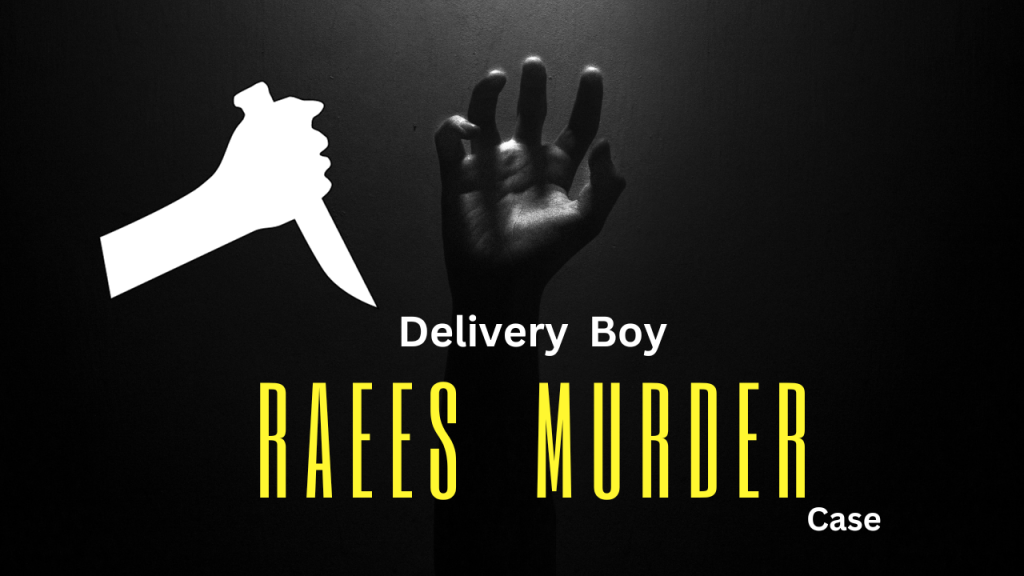10 Best Laptop Brands in 2024

Shopping for a laptop can be challenging. New models are released every year from over a dozen major manufacturers. While some companies are more reputed for producing higher-quality products, even the best laptop brands sometimes release models that have design flaws or too many compromises. Also, there are often complaints of poor quality control, inadequate after-sale customer support, and other issues associated with a particular manufacturer. As you may have guessed, there isn’t really a best laptop brand, as it depends entirely on your needs and preferences, though quite a few, like Apple, ASUS, Dell, and Microsoft, stand out.
We’ve bought and tested over 110 laptops, including models from over a dozen brands, and below are our recommendations for the best brands for laptops. The order in which these laptops appear in the article doesn’t represent any ranking; they’re listed alphabetically. For more options, check out our recommendations for the best laptops, the best business laptops, and the best gaming laptops.
1. Apple MacBook Air 13-inch (M3)

The MacBook Air’s 13.6-inch display is one of the brightest laptops around and True Tone ensures excellent color accuracy as well, but the vibrancy falls short of some of the OLED competition. Rumors of Apple moving to OLED in the future abound, but not yet.
Like its predecessor, the MacBook Air M3 is one of the thinnest laptops around at only 0.4 inches. However, unlike many ultraportable laptops, it can keep up with an impressive workload thanks to the M3 chip. Whether it was our benchmarks or real-world usage, the Air M3 was up for any task.
Looking at the benchmarks, the MacBook Air M3 scored 12,087 on the Geekbench 6.2, well above the category average. Our Handbrake video transcoding test took 7 minutes and 54 seconds to transcode a 4K video to 1080p. Again beating the average, but it’s worth noting that the Intel Core Ultra powered competition are passing Apple here. Finally, Apple corrected the SSD read/write performance of the Air M2, jumping all the way from 2,800.1/2,210.6MBps on the M2 to 3,030.7/3,058.8MBps with the M3.
All that performance prowess doesn’t hurt its battery life either. If finding an outlet can be a challenge during your day, never fear, the Air M3 powered through over 15 hours of battery life testing in our lab.
If that’s not enough, you also get a 1080p webcam with Apple’s latest software tricks helping to boost the hardware to higher heights. So what are the downsides? If you have a lot of peripherals the pair of Thunderbolt/USB-C ports may be tough, but at least you have MagSafe 3 to keep both ports free while charging. Starting at $1,099, the 13-inch MacBook Air M3 isn’t cheap, but it remains a solid value.
You may want to pay the extra $200 for 16GB of RAM though, multitaskers will appreciate the extra performance headroom.
If you want to save money, the 13-inch MacBook Air M2 sticks around at a new $999 starting price and I expect to see it regularly discounted further.
2. Acer Swift Go 14

SPECs:
CPU: Intel Core Ultra 7 155H
GPU: Intel integrated Arc GPU
RAM: 16GB
Storage: 1TB SSD
Display: 14-inch, 1920 x 1200
Size: 12.32 x 8.6 x 0.68
Weight: 2.9 pounds
Pros:
Intel Core Ultra CPU/ARC GPU
NPU improves performance
Stylish, sturdy, all-aluminium build
Excellent Webcam
Improved Battery life
Cons:
Weak speaker performance
Base display could be more colourful
Acer’s Swift Go 14 is the easy choice for the best budget laptop. Starting at $749, the Go 14 isn’t the cheapest laptop around, but the value it offers is simply amazing. We reviewed the slightly upgraded $999 configuration, but the main trade-off is moving from an Intel Core Ultra 7 155H to a Core Ultra 5 125H. If you stick to productivity work, browsing, and other general computing the performance difference will be negligible.
The design remains the same at either price, with the Go 14 coming in at just 2.9 pounds. The metallic all-aluminum chassis gives off a faint sparkle that looks and feels far more premium than its price. Popping it open the contrasting black chiclet-style backlit keyboard looks and feels excellent. Acer also gives you ports aplenty on this portable laptop with two Thunderbolt 4 ports, two USB Type-A ports, an HDMI port, a microSD card slot, a 3.5mm audio jack, and a Kensington lock slot.
The display lands just below the mainstream average for color at 79.1% of the DCI-P3 color gamut (85.2% is average), but it beats the category average in brightness at 374 nits (354 is average). Again, factoring in the price, these are strong results. You could also opt for the 2.8K display configuration if you value a sharper image.
Performance with our review model was everything we’ve come to expect from the latest Intel Core Ultra. In our Geekbench 6.2 overall performance test, it scored 12,434, overtaking more expensive options like the MacBook Air M3 (12,087). It also scorched the competition for our Handbrake video encoding test at 5 minutes and 18 seconds, almost 4 full minutes under the category average (9:07) and again besting the MacBook Air M3 (7:54).
So what are the drawbacks? The battery life isn’t bad at 9 hours and 50 minutes in our testing, but it is well below top options like the MacBook Air M3 (15:21) or the Asus Zenbook 14 OLED (15:52). If you are frequently traveling or otherwise have difficulty plugging in, this could impact your decision. The built-in speakers are also less than stellar, so plan on some wireless headphones or earbuds.
However, these are pretty minor concerns for most users, so if you are looking for the best laptop value, look no further than the Acer Swift Go 14.
3. Asus Zenbook 14 OLED (Q425)

SPECs:
CPU: Intel Core Ultra 7 155H
GPU: Intel Arc Graphics
RAM: 16GB RAM
Storage: 1TB SSD
Display: 14-inch, 1080p
Size: 12.3 x 8.7 x 0.6 inches
Weight: 3 pounds
Pros:
Almost 16 hours of battery life!
Snappy performance
Quality audio
Smooth, comfortable keyboard
Secure webcam privacy shutter
Cons:
Display could be brighter
Runs a little hot
Asus has been on a roll with the Zenbook 14 OLED line for a few years, so while it is no longer a surprise, this early 2024 Zenbook takes yet another significant leap forward.
This is in no small part due to the new Intel Core Ultra chipset inside, putting the Zenbook 14 OLED on par with any productivity and light content creation laptops on the market, while also absolutely blowing the roof off our battery life test with 15 hours and 52 minutes in our test. That’s the longest a traditional Windows laptop has lasted in recent memory.
Divining into some of the specifics on performance, it overtook the 13-inch MacBook Air M3 in multi-core Geekbench 6.2 (12,707 vs. 12,087). That wasn’t its only win against the much-vaunted MacBook, the Zenbook also beat it in our Handbrake 1.6 test by converting a 4K video to 1080p in 6:36, over a minute faster than the Air M3’s 7:54.
The OLED display looks excellent in person, but the benchmarking put it in the middle of the road when it comes to DCI-P3 color gamut at 79.8%, that’s below the mainstream average of 85.2% and just slightly ahead of the MacBook Air M3 (77.8%). It is extremely color accurate with a Delta-E of 0.21, relevant for content creators. Display brightness is a weak point against its competition at 339 nits, it’s not a terrible result, but it’s something we want to see Asus address for the next model.
The Zenbook comes in at 3 pounds even, not exactly an ultralight, but not something that will weigh you down too much going from class to class or while commuting. Overall the Zenbook 14 OLED ticks just about every box we like to see for a student laptop, while going above and beyond with its performance and battery life. This laptop should comfortably hold up through four years of college or for a high school student preparing to head to college in the next year or two.
4. LG Gram SuperSlim 2023(Best ultraportable laptop)
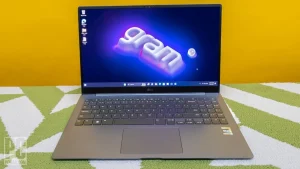
SPECs:
CPU: Intel Core i7-1360p
GPU: Intel Iris Xe
RAM: 32GB
Storage: 512TB SSD
Display: 15.6-inch, 1080p OLED
Size: 11.6 x 8.5 x 0.4 inches
Weight: 2.18 pounds
Pros:
Great battery life
Unbelievably thin and light
Crisp, rich display
Competition-beating performance
Cons:
Shallow keyboard
The LG Gram SuperSlim puts every other so-called ultrabook on notice with its 15.6-inch display, 0.49-inch thickness and unbelievable 2.18-pound weight. It is mind-bending that there is a real functioning laptop inside when you pick this thing up.
Even more amazingly, it isn’t a weak laptop that can’t do more than browse the web and generate documents, the Intel Core i7-1360p processor, 32GB of RAM, 512GB of RAM and an Intel Iris Xe GPU give you enough oomph to outperform the competition. Let’s not forget that it also features a 15.6-inch OLED display, while coming in lighter than many 13-14-inch ultrabooks.
The Gram SuperSlim proved its mettle in our benchmarks delivering a Geekbench 5 score that cleared the mainstream premium laptop average and even the M2 MacBook Air! The SSD is no slouch either, delivering a file transfer rate of 1,692.4MBps, well above the premium average of 1,362.7MBps.
Thin, light and powerful? You’re probably waiting to hear that it has terrible battery life. Think again! Apparently LG also shoved a large battery in the pocket dimension inside the Gram SuperSlim, because it lasted 11 hours and 38 minutes on our battery test.
So what’s the downside? There’s one magic trick that LG can’t manage and creating extra depth for the keyboard, which our reviewer found a little shallow for their liking. It’s not a dealbreaker, but worth considering if you are churning out thousands of words a day on the Gram SuperSlim.
That shallow keyboard is a small price to pay for the rest of what you are getting though, which is why the LG Gram SuperSlim earned 4.5 stars and an Editor’s Choice award. If you need an ultraportable ultrabook, look no further.
5. Dell XPS 15 (9350) The best high-performance laptop

SPECs:
CPU: Intel Core i7-13700H
GPU: Nvidia GeForce RTX 4070
RAM: 32GB
Storage: 1TB M.2 PCIe NVMe SSD
Display: 15.6-inch, 2160
Size: 13.6 x 9.1 x 0.7 inches
Weight: 4.2 pounds
Pros:
Slick, elegant design
Great overall and gaming performance
Vivid, OLED display
Cons:
Mushy keyboard
Below-average battery life
I’d be remiss if I didn’t add the Dell XPS 15 (9530) to the list. After all, it kept its boot on our best 14-inch pick, the Lenovo Slim Pro 9i. And while I could put it firmly in the creative professional realm, the laptop can also serve as a powerful productivity machine and a passable gaming rig. It’s got a stunning 3.5K OLED touchscreen paired with powerful speakers that just screams multimedia machine.
Armed with its 2.4-GHz Intel Core i7-13700H processor with 32GB of RAM, the XPS 15 (9350) can be a bit of a bully towards its competitors. Take for example, the notebook scored 12,171, defeating the 7,803 premium laptop average. The Dell however, had its work cut out for it from the Galaxy Book 3 (12,405) which has the same processor and the M2 Max MacBook Pro 16 which hit 14,626 on the Geekbench 6 overall performance test.
The XPS 15 came back swinging, transcoding a 4K video to 1080p in 5 minutes and 1 second, outpacing the 8:18 category average along with the Vivobook Pro 16 (5:50) and Galaxy Book 3 (5:26). On the Laptop Mag Battery Test, the XPS 15 lasted 8 hours and 58 minutes which failed to meet the 10:25 premium laptop average and was well short of the MacBook Pro’s ludicrous 18:56.
Along with the below-average battery life. The XPS 15 counts a mushy keyboard as a flaw. The latter is a minor annoyance compared to the battery life, but if you ensure that the Dell XPS 15 is always in the vicinity, it shouldn’t be a problem, especially with all the power the laptop brings to the table. The Dell XPS 15 is the ultimate jack-of-all-trades system that has something for everyone.
6. Asus ROG Strix Scar 18 – The best gaming laptop
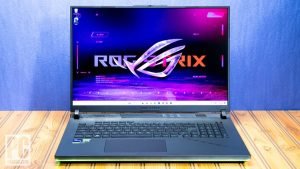
SPECs:
CPU: Intel Core i9-13900HX
GPU: Nvidia GeForce RTX 4090
RAM: 32GB
Storage: dual 1TB SSD
Display: 18-inch, 2560 x 1600
Size: 15.7 x 11.6 x 0.9~1.2 inches
Weight: 6.8 pounds
Pros:
Impressive overall and gaming performance
Flashy, futuristic design
Captivating display
Cons:
Pricy
Webcam could be better
Below-average battery life
When it’s time to game, and I mean really game — like obliterate everything in the level with wild abandon — look no further than the Asus ROG Strix Scar 18. This behemoth with a 18-inch, 2560 x 1600 display with 240Hz refresh rate is the way to go for buttery smooth rendering, which in those crucial moments can mean the difference between getting the kill shot or receiving it.
But the destruction you’re going to unleash comes by way of the 13th Gen Intel Core i9-13900HX and the Ndia GeForce RTX 4090 GPU with 16GB of VRAM. Both chips are the latest and greatest and very overclockable so you can squeeze every inch of power out of them. And while we’re here, I can’t overlook the pair of 1TB SSDs in RAID 0 configuration. This treacherous triad destroyed just about every benchmark we threw at it on both the overall and gaming performance.
Where the Strix Scar 18 hit a bit of a hiccup is the File transfer test and battery life. But about 4.5 hours is still pretty good for a laptop packing this much power. Outside of this, my only complaint about this system is the 720p webcam, which if I’m paying nearly $4,000, I expect 1080p –– hell 4K. But overall this is the gaming laptop to beat.
7. HP Spectre x360 14 2024 – The best 2-in-1 laptop

SPECs:
CPU: Intel Core Ultra 7 155H
GPU: Intel Arc Graphics
RAM: 32GBStorage: 2TB SSD
Display: 14-inch, 2880 x 1880, OLED
Size : 12.4 x 8.7 x 0.7 inches
Weight: 3.2 pounds
Pros:
Beautiful 2.8K OLED display
Stellar 2-in-1 performance
Over 11 hours of battery life
Bouncy keyboard
4K webcam
Cons:
Display benchmarks could be better
Limited ports
The new Intel Core Ultra version of the HP Spectre x360 14 takes everything we’ve loved about this laptop line in recent years and turns it up a notch. Beyond the useful 2-in-1 form factor, you have a gorgeous 2.8K OLED touchscreen display for creating or viewing content.
The laptop weighs in at 3.2 pounds, pretty light for a 14-inch 2-in-1, but thanks to that power-sipping CPU from Intel it still crushed our battery life test with over 11 hours on a single charge! That’s one of the best results we’ve ever seen from a 2-in-1. Despite it’s frugal battery usage, the Intel Core Ultra and Arc GPU blew our reviewer away, putting up better Geekbench and 3D Mark results than many heavier clamshell laptops.
So why isn’t it perfect? While the display is bright and colorful, we’ve seen better benchmarks from competitors. However, the rest of the package makes it impossible to argue with the HP Spectre x360 14 as the best 2-in-1 around, which is why the notebook earned 4.5 stars and our coveted Editor’s Choice award.
8. Acer Chromebook Spin 714 – The best Chromebook

SPECs:
CPU: Intel Core i5-1335
GPU: Intel Iris Xe
RAM: 8GB
Storage: 256GB SSD
Display: 14-inch,1600
Size : 12.3 x 8.8 x 0.7 inches
Weight: 3.2 pounds
Pros:
Almost 13 hours of battery life
Stylish chassisGood performance
1440p webcam
Cons:
Quiet speakers
I wrote an op-ed on how $1,000 Chromebooks shouldn’t be a thing and I stand by that statement thanks to the Acer Chromebook Spin 714. This sub-$500 has a lot going for it, including nearly 13 hours of battery life. Plus, according to our reviewer, it’s the most attractive Chromebook they’ve ever review. That’s high praise considering the less premium system tend to look like unassuming gray slabs.
But let’s leave the Spin 714’s dark-gray finish with the gold accents for a minute and take a look beneath the chassis. With its Intel Core i5-1335U CPU, don’t expect the system to do any heavy data crunching or run AutoCAD, but it can definitely do light-to-mid level work. But dismiss the 2-in-1 just yet. On the Geekbench 6 test, it defeated the HP Dragonfly Pro Chromebook which costs $300 more –– 6,335 vs. 4,263.
The tables were turned on the JetStream 2.0 benchmark, which tests how quickly large web pages load. The Chromebook Spin 714 achieved a score of 250.2, which bests the Chromebook average (240), but not the HP Dragonfly Pro Chromebook (256.7).
The Spin 714 also got the win our battery test with a time of 12 hours and 43 minutes, totally eclipsing the Dragonfly’s time of 9:17. It just goes to show, price doesn’t always dictate quality.
9. Apple MacBook Pro 14-inch (M3 Pro, 2023) – The best MacBook Pro
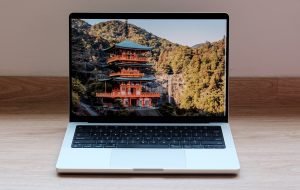
SPECs:
CPU: Apple M3
GPU: Apple M3 GPU
RAM: 8GB
Storage: 512GB
Display: 14.2-inches, 1964
Size: 12.3 x 8.7 x 0.6 inches
Weight: 3.4 pounds
Pros:
Excellent overall performance
Solid gaming performance
Incredible endurance
Cons:
Off-putting notch
Still no Face ID
Apple’s silicon keeps getting better and better as its third series of chips, the M3 debut bringing even better performance than the last two generations. And they’re also outpacing most of the Windows PCs on the market by a decent margin. Plus, it’s $400 cheaper than the M2 predecessor. It’s an all-out win for students, mobile professionals, creatives –– just about anyone that calls themselves a MacBook fan.
Boasting performance that’s 20% faster CPU performance than the M1 chip, I saw the MacBook Pro 14 score 11,870 on Geekbench 6, beating the XPS 13 (10,525). But it couldn’t top the Acer Swift X 14 (12,118). But on the Handbrake video transcoding test, the MacBook took 5 minutes and 38 seconds to transcode a 4K video to 1080p, blasting past the 7:51 average. It also left the Swift X (7:46) and XPS 13 (8:14) eating its dust.
Although Apple has been singing the praises of its new processors, the bigger news lies with the GPUs. Each graphics chip in the M3 series has a much larger GPU than past generations and sport Dynamic Caching, a new technology that includes hardware-accelerated ray tracing (a first for Apple) and mesh shading. The MacBook Pro achieved 51 frames per second at 1200p, on the Sid Meier’s s Civilization VI benchmark, surpassing the XPS 13 Plus’ (Intel Iris Xe graphics) 23 fps. It was just short of the 53-fps premium laptop average however, and the Swift X 14’s discrete Nvidia GeForce RTX 4050 GPU notched 92 fps (2.8K).
And while it has mixed performance in some areas, the MacBook Pro 14 still sports a stunning display, excellent audio performance and an ultra-comfortable Magic Keyboard. And with over 17 hours of battery life, the MacBook Pro can do work or play for almost the entire day.
10. Lenovo ThinkPad X1 Carbon Gen 11- The best business laptop

SPECs:
CPU: Intel Core i7-1355U
GPU: Intel Iris Xe
RAM: 16GBStorage: 512GB
Display: 14-inch, 1200
Size: 12.4 x 8.8 x 0.6 inches
Weight: 2.5 pounds
Pros:
Shockingly lightweight
Fast SSD
Great battery life
Cons:
Middling performance
Lenovo’s X1 Carbon series is a perennial mainstay on our best laptop page with good reason. They’re lightweight, powerful and serve up plenty of endurance. The Lenovo ThinkPad X1 Carbon (11th Gen) follows in this vaunted heritage, starting with its looks. Our best business laptop is indeed office ready with its handsome matte black soft-touch surfaces. Weighing a scant 2.6 pounds with a thickness of only 0.6 inches, the X1 Carbon is commute ready. Plus, it’s MIL-SPEC tested so it can take a drop or two or some spillage.
Realizing that mobile professionals need an added measure of security, the laptop has a fingerprint reader and a TPM 2.0 chip to encrypt sensitive data. The Windows Hello-compatible IR camera isn’t standard, unfortunately, but can be added for an added cost. And when it’s time to get to work, the ThinkPad X1 Carbon has plenty of ports to create a full workstation. The 14-inch display isn’t as vivid as we would like, but it’s plenty bright. Meanwhile, the audio is loud and crisp and the world-renowned keyboard is just as comfortable as we’ve come to expect. However, the touchpad is smaller than we would like.
The X1 Carbon lasted a whopping 13 hours and 45 minutes on our battery test and when it came to our benchmarks, there was no stopping this system. As a business laptop, the ThinkPad X1 Carbon (11..th Gen) is an undeniable powerhouse with a few minor cons such as the 720p webcam, which in a world of remote work falls short of the mark. But the Lenovo ThinkPad X1 Carbon (9th Gen) is a force to be reckoned with.
HOW TO CHOOSE THE BEST LAPTOP FOR YOU:
What are the best laptop brands? The best brands for laptops include Apple, Dell, Lenovo and HP, and they all have their strengths. For example, Apple make brilliantly-designed slim and light laptops, while Dell does a great range of high-end ultrabooks, as well as affordable devices and Chromebooks as well. Lenovo’s well known for making solidly-built business laptops (and some great 2-in-1 laptops as well), and HP’s also been making some gorgeous laptops recently that are some of the best laptops in the world.
When it comes to gaming, the best laptop brands include Alienware, Asus and Acer.
How much RAM does a laptop need?
RAM (Random Access Memory) is an important specification to look for in a laptop. You’ll want 4GB at the very least for a Windows laptop – though we’d actually recommend for many people to go for 8GB. That will ensure that the laptop runs well for years to come. Budget Chromebooks can get away with less RAM, such as 1GB or 2GB.
Battery life considerations Finally there’s battery life. This is likely to be one of the most important considerations you have when choosing what laptop to buy. The best laptops need to be able to let you work – and play – for hours on end without you having to scramble for a power adapter. Modern laptops are getting ever more power-efficient, which has led to longer battery lives. For a laptop to be included in our best laptops list, it needs to offer a battery life of five hours or more.
What to look for in a Laptop:
Battery life: The best thing about laptops is that they allow you to break free from your desk and use them almost anywhere – which is why checking the battery life is essential. For pure battery life, Chromebooks are the best laptops you can buy – but Apple’s latest MacBooks with M1, M2 and brand-new M3 chips come close, offering well over 10 hours of battery life. Meanwhile, gaming laptops usually sacrifice battery life for performance instead.
Performance: When looking to buy the best laptop for your needs, you should consider the performance a potential purchase offers. You don’t want to be stuck with a laptop that starts lagging after a few years. For Windows laptops, look to get one with a modern 14th generation (or 13th) Intel processor, or AMD Ryzen 7000 series. With a MacBook, go for an M1, M2 or new M3 model – which are Apple’s powerful chips made specially for its laptops.
You should also go for a minimum of 8GB of RAM, though 16GB is more future-proof. Recently, Microsoft suggested that 16GB of RAM would be the minimum requirement for the next generation of ‘AI laptops’. For Chromebooks, however, 4GB of RAM is fine.
Which Type of Laptop is Best for you?
General laptops: Where the best cheap laptops are found, devices that focus more on practicality than style, portability or power. That’s not to say they can’t be fast, but you’ll typically find a non-Ultrabook clamshell laptop with an HD screen and spinning drive-based storage for less than $600 or £400.
Ultrabooks: Where you’ll find thin-and-light notebooks sporting SSD storage and display resolutions that exceed 1080p. Paired with powerful, albeit mobile-centric components and especially long battery life, the best Ultrabooks will cost a pretty penny – $700 or £500 to $2,000 or £1,800.
2-in-1 laptops: Where notebooks that double as tablets are located. The Surface Book 2 might be a ways off, but many of the best 2-in-1 laptops are available right now. Outfitted with both detachable and 360-degree rotating hinges, these hybrids are the most versatile way to experience Windows 10 (or Chrome OS) on a touchscreen.
Chromebooks: Where you’ll find the best Chromebooks running Chrome OS. These do much of what Windows and macOS can in the browser, focused on cloud storage over local, while recently getting Android app support for touchscreen models. They generally cost less than $300 or £200 and some can even withstand a slight tussle.
Gaming laptops: Need a laptop to play games (almost) just like a shiny desktop PC can? Then you’ll want one of the best gaming laptops. These machines generally cost from $800 or £600 to upwards of $3,000 or £2,800 and they’ll likely be the ones to take advantage of AMD’s laptop-grade Ryzen processors first. If you’re really on a budget, then you can check out the best cheap gaming laptop deals.
Laptop-tablet hybrids: Designed from the tablet-first approach to laptop-tablet hybrids, the best Windows tablets pack beyond-HD touchscreens, sometimes with kickstands in their frames or provided via keyboard covers. These generally shine with a stylus, and range from the budget to the premium price ranges.
FAQs:
Which brand of laptop has the best performance?
Vivobook from ASUS
Which laptop is robust and long-lasting?
Toughbook 40 from Panasonic.
Does Dell outperform HP?
Customer support from Dell is well known for being excellent, however HP is a little more inconsistent. Your experience with customer care may vary depending on where you live, but most internet consumers appear to prefer Dell for laptop customer service.
Which laptop will survive into the future?
Choose 8+ cores and 16+ threads for optimal future proofing. An AMD Ryzen 9 7000 Series CPU or a 12th generation Intel Core i9 CPU should be your top choice if you require the greatest CPU for demanding tasks. RAM: It is now advised to have 16 GB of RAM.

 English
English 









